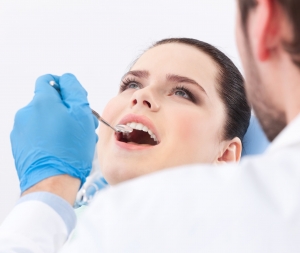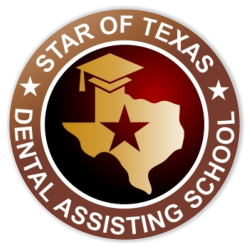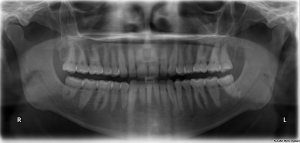We are now in our eighth week at The Star of Texas Dental Assisting School. Our dental assistant students are studying hard and moving closer towards their graduation. We’re so proud of them and all of their hard work! Today we are going to delve a little bit into initial oral exams, what they look like from the patient’s point of view, and what exactly they entail for dental assistant students.
Initial Oral Examination
Possibly one of the most important parts of successful dental treatment is the complete initial oral examination. In order to make an accurate diagnosis and an appropriate treatment plan for you, we must know the exact nature of any pathology (disease) present in your mouth. Even if there is no dental disease present at the time of the initial oral examination, it is extremely important to record the normal appearance of your mouth, so that in the event of a change, we can make a proper diagnosis. This baseline record makes it possible to more accurately judge the process and severity of change that has occurred.
The initial oral examination includes an inspection of your head, neck, and facial structures and palpation of the lymph nodes of the neck. We examine your temporomandibular joint (jaw joint or TMJ) for proper function. We note the condition of your lips, insides of your cheeks, tongue, glands and gland duct openings, muscle attachments, and hard and soft palates. This all occurs before we even look at your teeth and gums.

When examining your teeth, we chart how many are present and which teeth are missing. We look at tooth alignment and status of decay. In addition, we chart the existing restorations and record which restorations might be broken or defective and need replacement. If you have replacement teeth present, either partial dentures (which are removable) or fixed crowns, we assess their present condition and function. If you are missing teeth, we begin to determine whether it is in your best dental health interest to consider their replacement.
We also look at the appearance of your teeth, the position of your teeth, how you look when you smile; in short, how other people see your teeth. We note irregularities in the tooth alignment and discoloration in teeth and fillings that might detract from your appearance.
We examine the support for your teeth, the gums and bone. We look at the color, contour, texture, and consistency of the gum tissue surrounding the teeth. We carefully determine if there is bleeding of the gums. We note any recession of the tissue where the gum tissue has pulled away from its original position against the tooth. We use a periodontal probe to help measure and quantify the health of your gums, as we check for increased sulcular depth (periodontal pockets) around the teeth. The mobility of the teeth is also checked. Signs of gum disease include, but are not limited to, bleeding of the gums spontaneously or when probed, recession of the gums, redness and swelling, exudate (pus), and mobility of teeth.
To be complete, the examination must also include an evaluation of recent radiographs (x-rays) of diagnostic quality. Depending on the condition of your mouth, we may need from 14 to 20 recent radiographs. From the radiographs, we can more directly examine the health of the bone that ultimately supports the teeth. We look for unerupted or impacted teeth, decay that may be present under old fillings or in between teeth, and areas of infection around roots that might require endodontic therapy (root canal treatment). An estimated bone height around teeth and abnormalities that might exist is also noted. While a complete diagnosis cannot be made without this vital diagnostic tool, we take only the necessary number of radiographs of your teeth. We are well aware of the hazards posed to the patient and the person making the radiographic exposures. Safe radiographic practices are extremely important to us.
For certain types of treatment, we may also need to take intraoral photographs, video pictures, impressions for study models of the teeth and bite (arch) relationships. Some parts of the exam will be completed and recorded by trained and licensed dental auxiliary personnel such as dental hygienists and dental assistants.
Using the results of the diagnostic findings and your expressed concerns, we will arrive at a diagnosis of your dental condition. We can then formulate treatment plans with appropriate options that will address all of your needs. Only when this is done will your dental treatment begin.
Due to the many facets of a complete initial oral examination, you can see that it cannot be adequately done in 10 minutes. The more your mouth deviates from the ideal (all teeth in place, perfect alignment, no decay, no restorations
If you have any questions regarding the duties of a dental assistant or simply want to learn more about the Star of Texas Dental Assisting School, please call us at (512) 487-1547 to schedule an appointment with an Admissions Representative.


